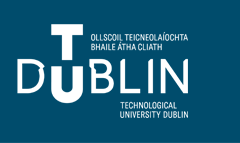Document Type
Theses, Ph.D
Rights
Available under a Creative Commons Attribution Non-Commercial Share Alike 4.0 International Licence
Abstract
Nanoscience is seen as one of the key enabling technologies of the 20th century and as its range of applications increases it is important to look at how nanomaterials interact with biological environments. Some of these interactions have given rise to toxic effects and thus, the creation of the field of nanotoxicology, it has also been noted that current methods of evaluating toxicity may not be sufficient to keep up with the rapidly emerging range of nanomaterials becoming available. It is clear that alternatives are necessary. In this thesis, a phenomenological rate equation model is constructed to simulate nanoparticle uptake and subsequent cellular response. Poly (amido amine) (PAMAM) dendrimers, generations 4 – 6 were employed to model the response due to their well defined physico-chemical properties. Upon particle uptake, the model simulates the temporal evolution of: increased reactive oxygen species (ROS) generation, decrease in cellular anti-oxidants, caspase activation, mitochondrial membrane potential decay (MMPD), Tumour Necrosis Factor – alpha (TNF-α) and Interleukin 8 (IL-8) activation, based on previously obtained experimental data.
The simulated results match well the experimental observations over a range of different doses and time points, and over a range of different cell lines: including HaCaT (human keratinocytes), SW480 (human colon andenocarcinoma cells) and J774A.1 (mouse macrophages). Furthermore, differences in the cytotoxic responses of each cell line is understood via variation of intracellular antioxidant levels and differences in the responses to several assays is understood in terms of their sensitivity to different cellular events. The model is able to simultaneously visualise the dose and time dependence of the toxic response of these cells to nanoparticle uptake and describes this interaction using a system of rates, which decouple the cell and particle based parameters. This rate based approach may form the basis of a valid alternative to effective concentrations for the classification of nanotoxicity and can lay the foundation for Quantitative Structure Activity Relationships (QSARs) and a better understanding of nanoparticle Adverse Outcome Pathways (AOPs). To further the range of applicability, the model was extended to simulate the toxicity of Polystyrene Nanoparticles with amine modified surface groups (PSNP-NH2). PSNP-NH2 did not share the same well-defined physico-chemical properties as PAMAM dendrimers, therefore, information on the size and extent of surface functionalisation was obtained via Scanning Electron Microscopy (SEM) and Nuclear Magnetic Resonance (NMR), respectively. The toxicity was evaluated using Alamar Blue (AB) and 3-(4,5-Dimethylthiazol-2-yl)-2,5-diphenyltetrazolium bromide (MTT) at various time points from 6 – 72 hours. Again, the model results were seen to faithfully simulate the experimental results, with identical model parameters, with the exception of the endocytosis rate (a particle size dependant property, which was modified to account for the huge disparity in size between PAMAM dendrimers and PSNP-NH2) and rate of generation of ROS (determined by the number of surface functional groups). The consistancy of the model over a range of differnt nanopaticle types adds validity to such an approach to evaluate nanoparticle toxic potential. Nanoparticle uptake is a critical process in the induction of toxicity. Therefore, to bypass this process could eliminate the subsequent toxic response. PAMAM dendrimers (G4 and 6) and HaCaT cells were again employed. Cells were treated with DL-Buthionine-(S,R)-sulfoximine (BSO) to enduce membrane permeability and endosomal activity was tracked using confocal laser scanning microscopy (CLSM), ROS generation tracked with the dye Carboxy-H2DCFDA and viability measued with AB and MTT. A dramatic change compared to untreated cells occured: reduced uptake of both generations of PAMAM dendrimer, reduced ROS generation and huge increases in mitochondrial activity were observed. These results indicated that dendrimer uptake appeared to be occuring via passive diffusion into the cell, thereby avoiding the endocytosis associated ROS production. Toxicity was still noted for the higher dose regime. BSO is also known to reduce cellular Glutathione and the study highlights the importance of GSH in maintaining the redox balance of the mitochondria, but also points to the potential of controling nanoparticle toxicity via control of the uptake mechanism employed by the cell.
Finally, an acellular assay was designed to quantify the potential for a nanoparticle to generate ROS. The enzyme Monoamine Oxidase – A (MAO-A) was used to generate ROS (Hydrogen Peroxide – H2O2) and the effect of PAMAM and PPI dendrimer poylmers on this production were examined. The acellular reaction rate (ARR) was found to be dependant on the particle physico-chemical properties, and within a series of nanoparticles can also be related to the toxicity. The difference in relating the acellular data to experimental results between different series of particles points to the importance of cellular parameters such as uptake rate in determining toxicity. The acellular results were then modelled based on a similar series of equations as used in the cellular studies. The cellular and acellular modelling approaches developed within this thesis, indicate that such a method may form an efficient and cost effective alternative for the evaluation of nanoparticle toxicity and furthermore, this toxicity is primarily associated with two parameters: the cellular dependant uptake rate and the particle dependant number of surface groups.
DOI
https://doi.org/10.21427/D7X30M
Recommended Citation
Maher, Marcus A. (2016) Structure-activity relationships governing the interaction of nanoparticles with mammalian cells- predictive models for toxicology and medical applications. Doctoral Thesis. Technological University Dublin. doi:10.21427/D7X30M
Included in
Medical Biophysics Commons, Medical Biotechnology Commons, Medical Cell Biology Commons, Medical Toxicology Commons


Publication Details
Successfully submitted for the award of Doctor of Philosophy (Ph.D) to the Technological University Dublin, 2016.